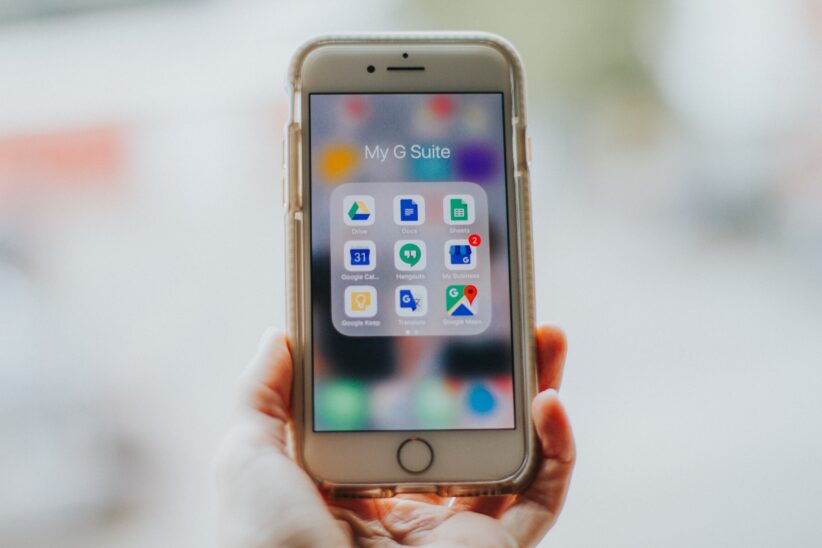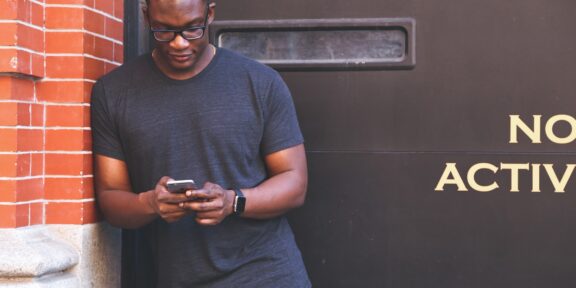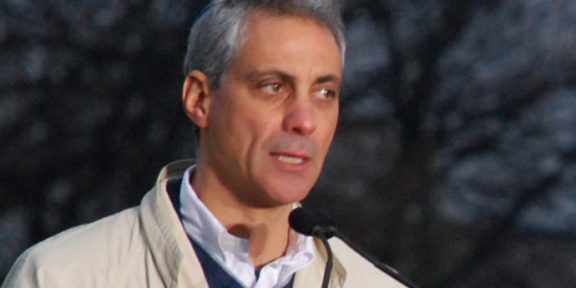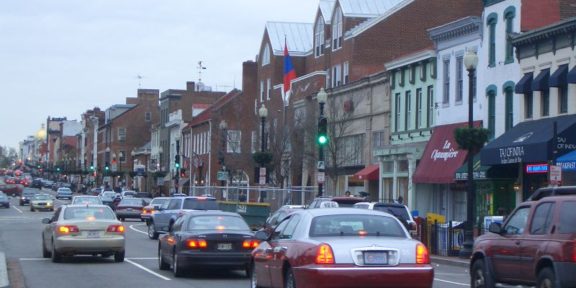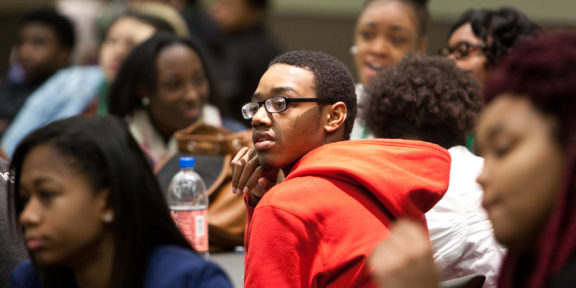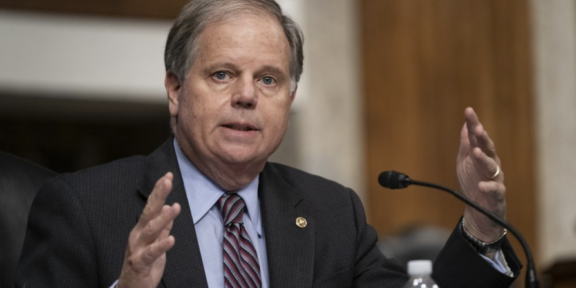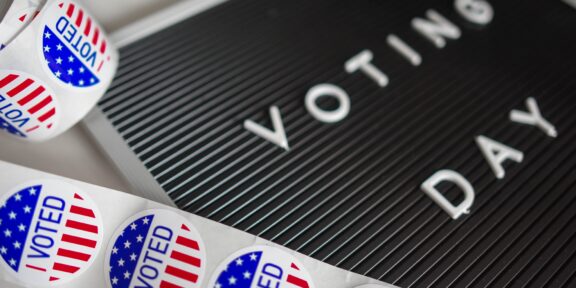Jeresa Anderson, Reimagined Futures for Howard University News Service
Section 230 of the Communications Decency Act (CDA) has become a topic of debate in recent years due to the progression of technology and the growth and use of the internet. And as the internet further develops; leaders on both sides of the political spectrum are looking for ways to make changes that will affect the internet as users know it.
The CDA which was passed as Title V of the Telecommunications Act of 1996, was crafted to encourage growth in technology through less regulation. The Act was also intended to limit access to explicit content for minors online. Though CDA was not included in the original drafts of the law, it was included as an amendment by the Senate.
Within this often criticized law are 26 words that have shaped the internet as the world sees it today, and that is 47 U.S.C. § 230, also known as Section 230. Though the section has been thrown around in several debates between political leaders, the criticism behind it is usually fueled by misunderstandings and misconceptions.
Section 230 states that, “No provider or user of an interactive computer service shall be treated as the publisher or speaker of any information provided by another information content provider.” In other words, any computer service providers are protected against laws that would otherwise hold them accountable for what is published on and through their services.
This does not just apply to social media platforms. Section 230 allows for several other apps and platforms like Yelp and TripAdvisor, or any other platform that allows its users to post reviews and comments in reference to certain businesses and services offered, to exist. Without Section 230, these types of companies would most likely be flooded with legal actions against them regarding the content posted on their platforms.
Section 230 has been quite beneficial for internet users, especially those involved in social movements like the #MeToo and Black Lives Matter movements. Both movements garnered a massive amount of attention due to the open discussions on sexism and race. This open dialogue allowed people to not only discuss their issues, but organize on social media platforms.
“The things that we’ve seen around organizing like the MeToo movement or certain other social movements online where in a world without Section 30, platforms might be a little more hesitant to carry controversial ideas or things that they felt might be in a way that could open them up to liability if something proved to be false or exaggerated,” said Jennifer Huddleston, the director of technology and innovation policy at the American Action Forum (AAF).
In her role at AAF, Huddleston focuses on the intersection of law and technology including issues related to Section 230. The AAF focuses on a variety of policy issues and looks at how economics plays into them. Their goal is to provide policy tools to policy makers including tech policy.
While the intention seems to have led to open dialogue, the section has been the target of several politicians. Some Democrats believe there should be more censorship on social media platforms claiming that companies like Twitter and Facebook do not do enough to stop hate speech online. On the other side of the road, some Republicans believe there should be less regulation on the internet citing the censorship of misinformation aimed against their conservative base.
“Currently what we’re seeing with Section 230 is a tug of war. We’re seeing alleged harms and perceptions from both sides of the aisle. One side’s proposals ultimately want more moderation to ensure that the internet is made “more safe”, while the other side believes that there are allegations of censorship and that the internet is already too filtered,” said Kir Nuthi, the Public Affairs Associate at NetChoice.
“What we’re seeing is that both sides seem to think that Section 230 is at the crest of this issue. Section 230 as it stands is a balance between free expression and online safety,” she continued.
Nuthi focuses on policy communications and issues facing the internet such as e-commerce and social media by making her content more public facing and digestible through social media and writing.
One of the most prominent leaders to be affected by this censorship is former President Donald Trump, who was stripped of all of his social media privileges following the riot at the U.S. Capitol on Jan. 6. This followed several instances where Twitter would flag his tweets for misinformation about allegations relating to voter fraud.
Trump’s feud with Twitter led to him sign an executive order attempting to limit the legal protection for companies offered by Section 230. In his order, he suggested that these companies were being selective in who they chose to censor.
“Section 230 was not intended to allow a handful of companies to grow into titans controlling vital avenues for our national discourse under the guise of promoting open forums for debate, and then to prove those behemoths blanket immunity when they use their power to censor,” said President Trump in the order.
In this sense, the president was correct according to several experts. This was not the intention of Section 230, and quite frankly it was the exact opposite. In his research, Jeff Kosseff, an assistant professor in the United States Naval Academy’s Cyber Science Department, writes about why there are so many misunderstandings regarding the law and what it’s true purpose is.
“I found that Congress passed Section 230 to empower consumers and platforms—rather than the government—to develop the rules of the road for the nascent commercial internet,” claimed Kosseff in his research.
Section 230 was worded and created in a way to allow for the expansion of the internet with little influence by the government.
Section 230 allows for companies to basically let their users set the guidelines for content they find appropriate on their platforms by remaining neutral. In Trump’s case, Twitter amped up their quest to stop the spread of misinformation about the election. This action by Twitter came years after outcry by other social media users who called for Trump to be censored.
While some were celebrating Trump’s removal from social media, there are experts and activists who believe this move made by social media platforms could set a dangerous precedent.
“What we are concerned with are when we have these completely unaccountable titan tech giants who are not constitutional right. They’re not subject to any constraints. With Trump we could impeach him and we did. Trump, we could vote him out of office and we did vote him out office. Anything he would do in his governmental capacity was, in terms of suppressing speech, is subject not only to First Amendment limits, but also due process and other constitutional limits, but none of those limits apply to Jack Dorsey,” said Nadine Strossen, a professor of law, as she explains a statement made by the ACLU following Trump’s ban.
“Donald Trump will find another platform. He’s wealthy and powerful and politically connected, but we’re concerned about clients, especially those who have traditionally been marginalized and we know that their message is helpful and they don’t have recourse and they don’t have alternative platforms to go to,” she continued.
Nadine Strossen was the president of the ACLU from 1991 to 2008. She currently serves as a professor of Constitutional Law at New York Law School.
In a way, this issue for some is less about freedom of speech and government regulation, and more about the growing power of Big Tech companies. They were able to completely shut the president from their platforms in order to stop him from any further damage he may have caused.
That is a lot of power to hold, but social media has not been deemed a public space or forum where this type of speech would be protected under the First Amendment.
“Big Tech has not been declared to be a public square or a public space, the same way that a park would, for example, in part, because it’s a private company. And it’s important to remember that these are private companies with private decisions,” said Huddleston.
So, what would any changes to Section 230 mean and who would they affect? Without legal protections offered by the law, it would be increasingly difficult for newer, smaller companies to jumpstart and allow for users to have open dialogue online without the companies themselves being sued.
“The main job of it [Section 230] is to make sure that internet platforms, internet users and basically that internet services don’t get obliterated from litigation… it may not matter whether you would ultimately be found liable for your user’s content or not, because you’re going to be drained dry by a battle to figure out whether you even need to answer this lawsuit or not,” said Cathy Gellis, a civil lawyer in the San Francisco Bay area.
“So, it is much better to have Section 230 because what it is designed to do is make sure liability works the way it normally and constitutionally would work without forcing everybody to litigate to assert the rights and defenses they would have had anyway,” she continued. (split the quote up)
In turn, this would mean Big Tech companies like Twitter and Facebook would dominate social media websites because they can afford to pay for legal fees in any given lawsuit, a smaller company with less finances won’t necessarily have the ability to do the same. This limits competition essentially giving these companies even more power than they already have.
In a recent opinion, Justice Clarence Thomas following the court’s dismissal of a case alleging Donald Trump violated the First Amendment by blocking Twitter users suggesting that these social media powers should be subject to special regulations.
“Today’s digital platforms provide avenues for historically unprecedented amounts of speech, including speech by government actors. Also unprecedented, however, is the concentrated control of so much speech in the hands of a few private parties,” Thomas wrote.
This points to a broader issue many are finding now with Section 230 in that many of the lawmakers who supported it’s passing could not have foreseen the growth of companies like Twitter and Facebook and how they could potentially dominate how users consume content in today’s society.
“It didn’t seem like the internet was going to play as outsized of a role in society and our economy as it ended up playing, but they key thing to note is that the U.S. had invested interest in it doing so,” said Diami Virgilio, a lecturer at The City College of New York.
“The U.S. had already as early as the 1970s and ‘80s started to orient a lot its exercise as a kind of soft power around information and communication technology diffusion, networking and development,” he continued.
Ultimately, Congress has the power to make amendments to Section 230 and the rest of the CDA, but any changes made has to consider a wide array of issues that may be caused in consequence to these changes. They also must consider the long and complicated history of the law that has led to an open internet where it’s users are able to freely discuss anything as long as it does not go against their community guidelines.

